I’ve been working in Liverpool for a few months now, I take the Merseyrail train into Liverpool Central and then walk up the hill to ScraperWiki’s offices which are next door to the Liverpool Metropolitan Cathedral aka “Paddy’s Wigwam”.
The cathedral was built in the 1960s, I rather like it. It looks to me like part of a set from a futuristic sci-fi film, maybe Gattacca or Equilibrium. Or some power collection or communication device, which in a way I suppose it is.
To be honest the rest of my usual walk up the Brownlow Hill is coloured by a large, fugly carpark and a rather dodgy looking pub. However, these last few weeks the Merseyrail’s Liverpool Loop has been closed to re-lay track so I’ve walked across town from the James’ Street station, giving me the opportunity to admire some of Liverpool’s other architecture.
As an aside, it turns out that Merseyrail is the second oldest underground urban railway in the world, opening in 1886 and also originally running on steam power according to wikipedia, which seems to contradict Christian Wolmar in his book on the London Underground, which I recently reviewed. (Wolmar states the London Underground is the only one to have run on steam power.
Returning to architecture, I leave James’ Street station via the pedestrian exit on Water Street, there is a lift up onto James’ Street but I prefer the walk. As I come out there is a glimpse of the Royal Liver Building, on the waterfront.
Just along the road is Liverpool Town Hall, for some reason it’s offset slightly from the centre of Castle Street which spoils the vista a little.
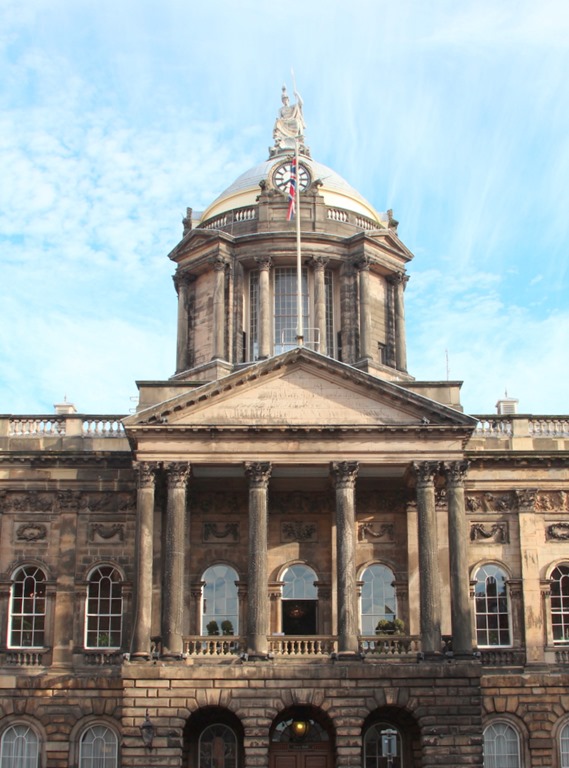 Down at the other end of Castle Street we find the Queen Victoria Monument, she stands in Derby Square in front of the rather unattractive Queen Elizabeth II Law Courts.
Down at the other end of Castle Street we find the Queen Victoria Monument, she stands in Derby Square in front of the rather unattractive Queen Elizabeth II Law Courts.
On the way I pass the former Adelphi Bank building, now a Cafe Nero. I like the exuberant decoration and the colour of the stone and domes.
Raise your eyes from ground level and you see more decoration at the roof line of the buildings on Castle Street:
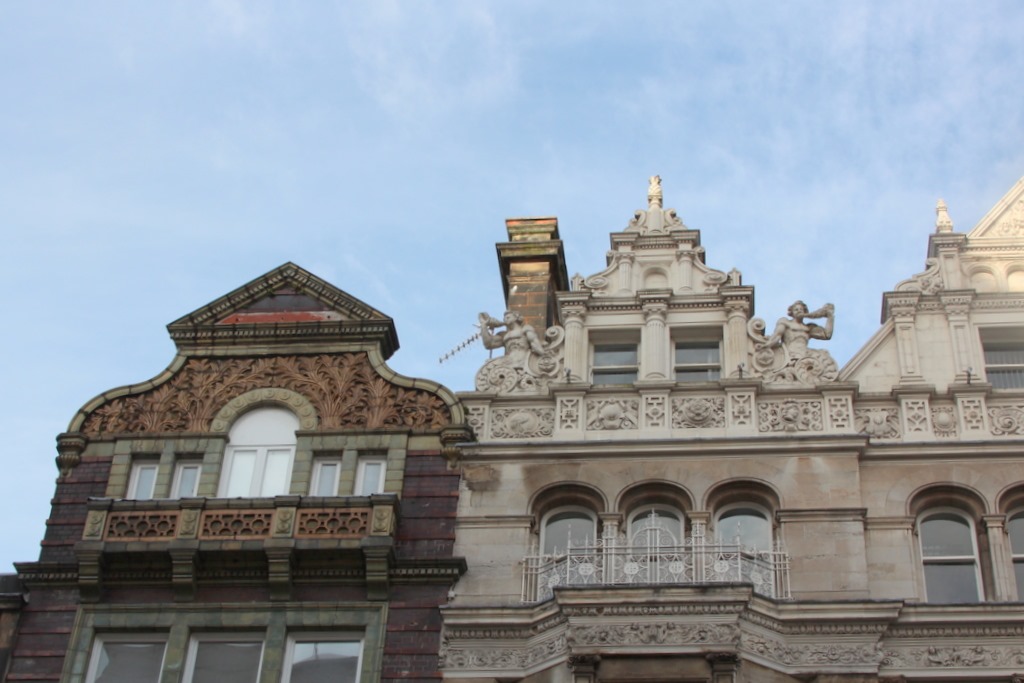 Once I’ve passed the Victoria Monument it’s a long straight walk down Lord Street then Church Street which has a mixture of buildings, many quite modern but some a bit older, often spoiled by the anachronistic shop fronts at street-level.
Once I’ve passed the Victoria Monument it’s a long straight walk down Lord Street then Church Street which has a mixture of buildings, many quite modern but some a bit older, often spoiled by the anachronistic shop fronts at street-level.
I quite like this one at 81-89 Lord Street but it’s seen better days, it used to look like this. It looks like it used to have a spectacular interior.
Further along, on Church Street, there is a large M&S in a fine building.
By now I’ve almost reached my normal route into work from Liverpool Central station, just around the corner on Renshaw Street is Grand Central Hall, which started life as a Methodist church.
It’s a crazy looking building, the buddleia growing out of the roof make me think of one of J.G. Ballard’s novels.
We’re on the final straight now, heading up Mount Pleasant towards the Metropolitan Cathedral. Looking back we can see the Radio City Tower, actually we can see the Radio City Tower from pretty much anywhere in Liverpool.
A little before we reach the Metropolitan Cathedral there is the YMCA on Mount Pleasant, another strange Victorian Gothic building.
I struggled to get a reasonable photograph of this one, I was using my 28-135mm lens on a Canon 600D for this set of photos. This is a good walking around lens but for photos of buildings in dense city environments the 10-22mm lens is better for its ridiculously wide angle view – handy for taking pictures of all of a big building when you are standing next to it!
So maybe next week I’ll head out with the wide angle lens and apply some of the rectilinear correction I used on my Chester photographs.



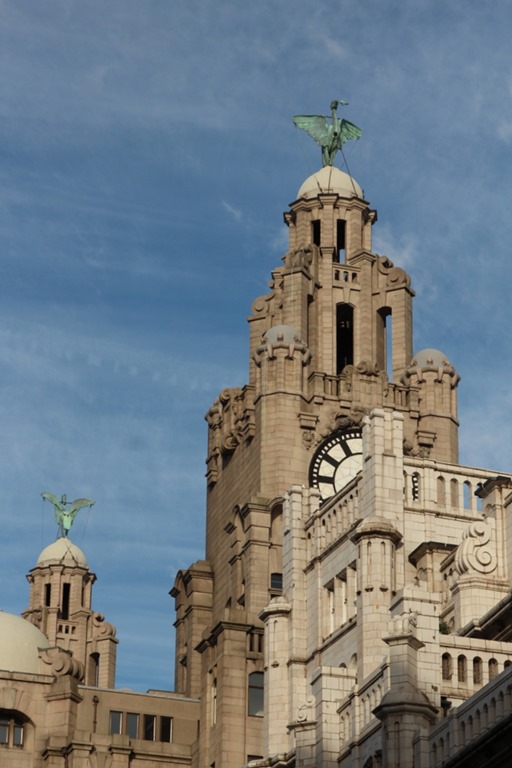
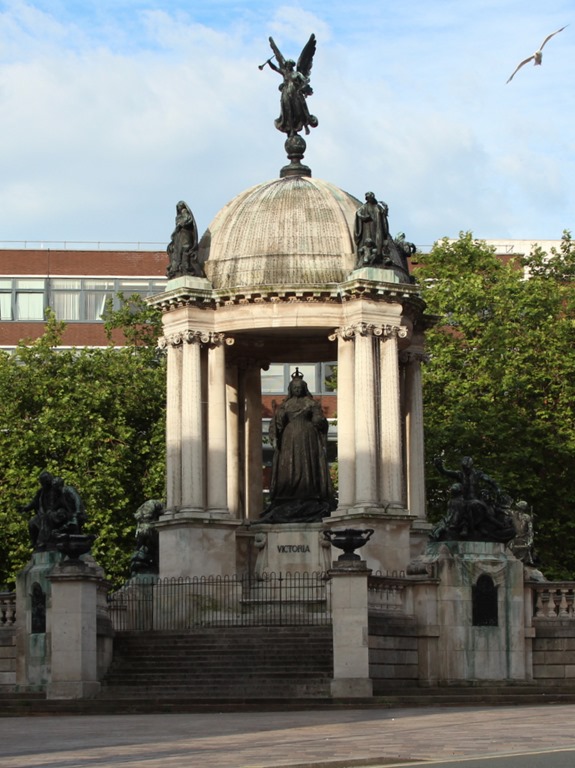
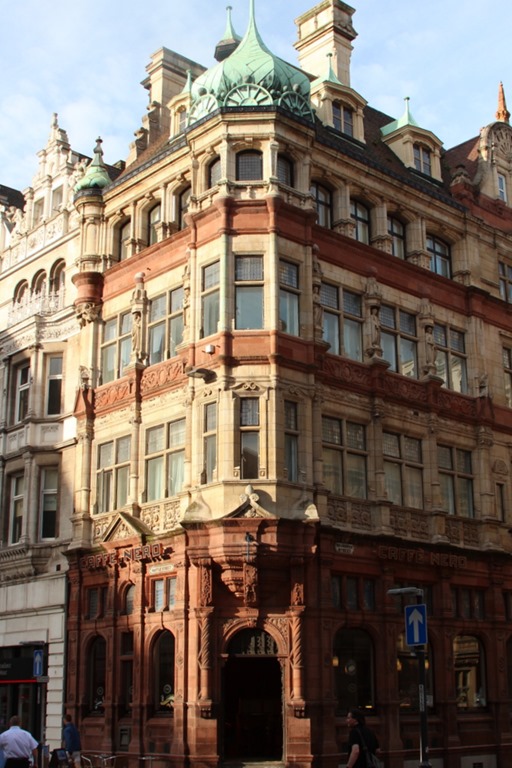
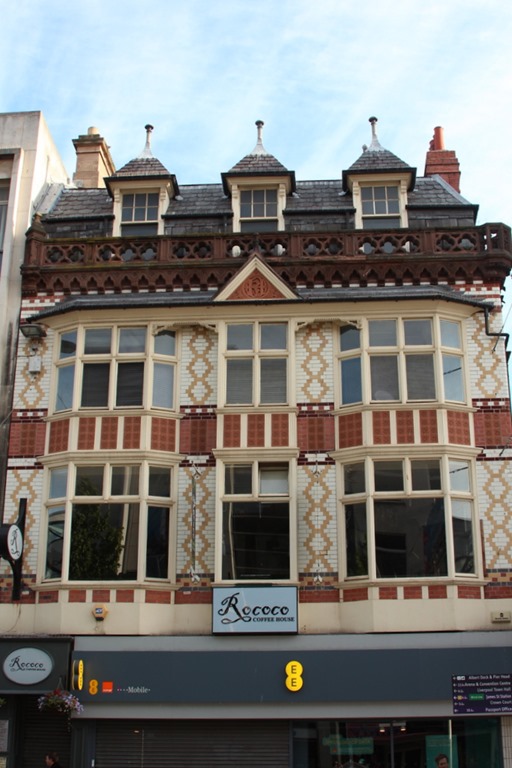
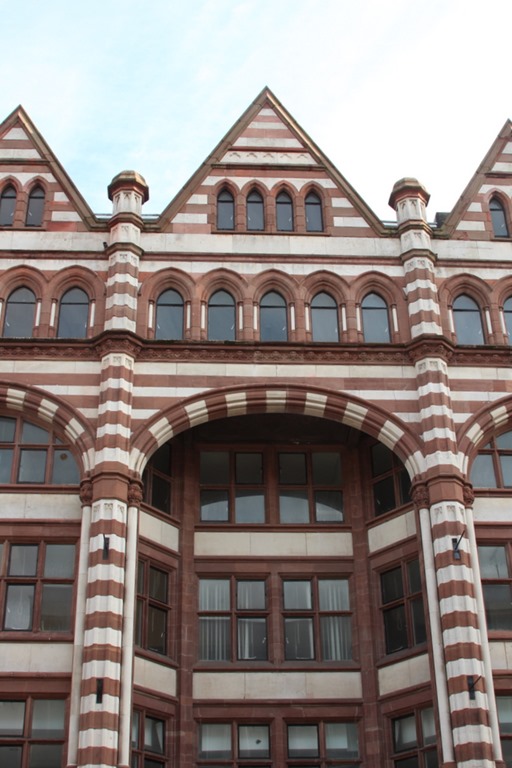
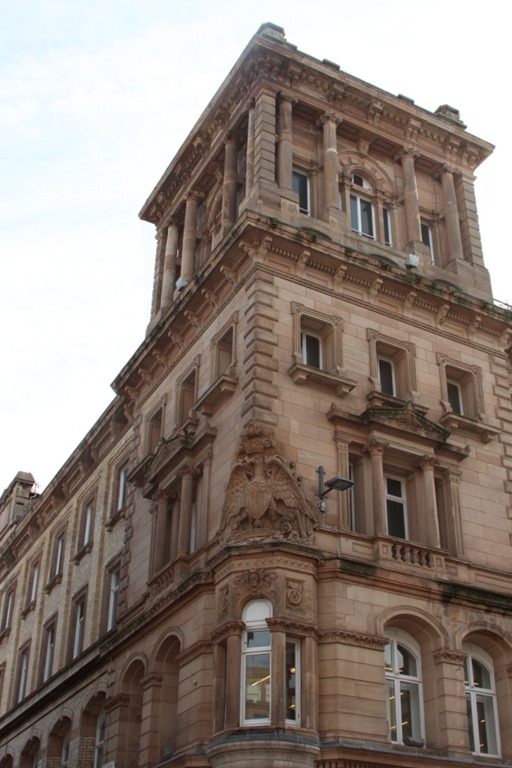


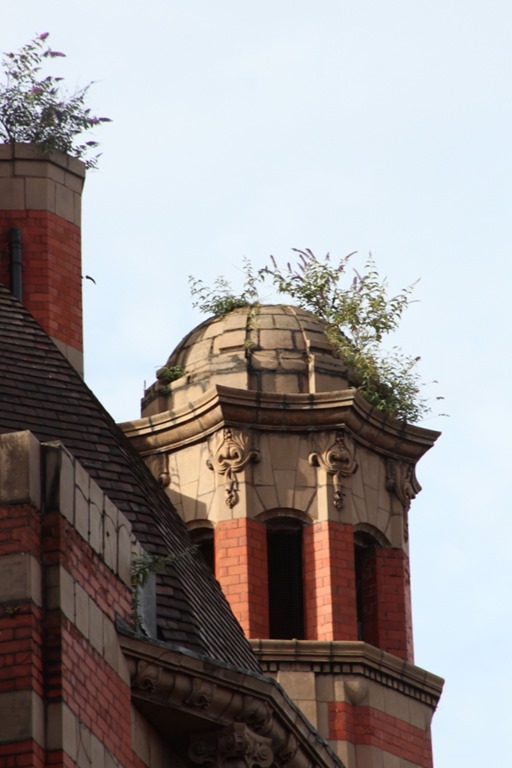

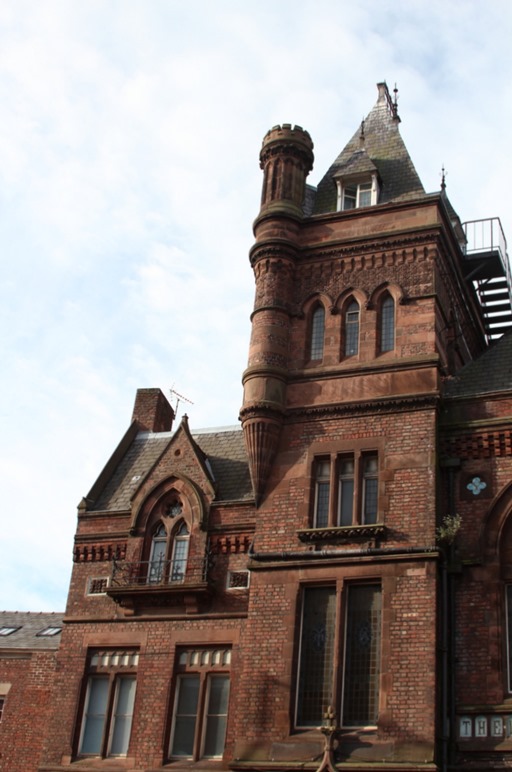

6 comments
2 pings
Skip to comment form
Enjoyed the tour Ian. Next week can you also turn right into Hope Street and visit the Phil and also go up the Anglican Cathedral’s tower?
Author
I’ve not visited the Anglican cathedral yet but Hope Street and the Phil (which is pretty ugly) I pass on the way to lunch. I’m going to head out with my wide angle lens next, also I’ve ordered Pevsner city guide for Liverpool so I know what I’m looking at!
You think the Phil is pretty ugly! I was refering to “the most ornate pub in Britain”
http://bill-pearson.blogspot.co.uk/2009/12/probably-most-ornate-pub-in-world.html
Not to be confused with the Liverpool Philharmonic Hall (where I did have a nice meal in Rubato in the basement).
Author
I’ve walked passed that Phil a couple of times and not even noticed!
The Mersey Railway was indeed steam-operated at first. Beyer Peacock built them a class of 0-6-4 tank engines with condensing gear. The steep gradients in the tunnel under the river meant they needed to be powerful; when they were built, B-P claimed they were the most powerful tanks in the world. Believe it or not, at one time in the 1890’s you could get a through coach from Liverpool to Folkstone Harbour that was attached to a Mersey Railway train for the first part of its journey, then taken on to Reading by the GWR on one of its Birkenhead to London trains.
Author
I’m only know starting to appreciate how important Liverpool was at its peak – I’ve been reading the Pevsner Guide.
[…] Walking around now what I see is completely at odds with my perceptions, you can see in my earlier post. To add some decoration to this post, below is the Royal Liver Building, one of the Three Graces, […]
[…] on my own blog I managed to do a couple of photographic posts, one on Liverpool. The rail loop under Liverpool was closed which meant I had to walk across town to work, and I […]